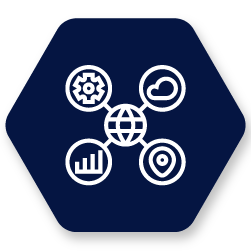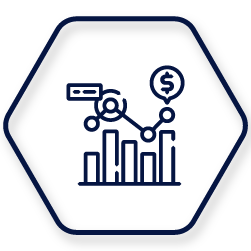Data classification isn’t a ‘nice-to-have or optional if you want to introduce category management into your business. Without effective data classification, you will struggle as a retailer. Or even as a supplier. The opposite is also true. By classifying your data correctly, any category management action you take will be that much more effective and meaningful.

What is data classification?
When you think of the word data, you might often think the implication is that it is only numerically applicable, often to coding, sales, or research. However, data does not apply only to numerical information but also to any factual information that you can use as a basis for reasoning, discussion, or calculation.
In the context of retail and specifically category management, data is fundamental. We’ve written extensively about the critical nature of data and what you can achieve with it. What’s more, it is vital not only numerically but also factually.
Data classification in category management includes market data, living-standard measurement (LSM), or store data such as the size of the store and the number of drops available for each category.
Product classification is also one of the most critical facets of category management. Classifying your collected data into categories, subcategories, segments, and even sub-segments can help you make sense of the products you stock in your store. We touch on all three of these types in this article.
As for why data classification is necessary, that’s simple.
By classifying your data, you can build accurate reports. It makes it easier for you to identify the performance of your market segments, store, category, and products. Besides that, you can determine your ranges and learn which of your products are your top performers. It also enables you to figure out which of your products are not performing as expected.
More than that, with proper data classification, you can identify the correct space needed per shelf per category. Once classified, it impacts your store layout and any floor planning efforts.

What are the different types of data classification?
As mentioned above, there are three primary ways of organizing your data. You can classify according to market, store, or product data. None of these three is less or more critical than the other.
Let’s take a closer look.
Market data
Market data is the information that you can analyze from the industry in question. For example, you can analyze retail trends, buying habits, and different brackets of consumer spending that exist within an industry.
It's generally not the type of data that is easily accessible to a retailer. You can purchase market data. However, depending on who you approach, it can be expensive. That's why it's a good idea to enter into agreements with your suppliers since they will usually have access to this and can provide you with it.
It is effective when implemented correctly since it allows you to position and classify your products in a manner that would be more attractive to certain groups or segments of consumers.
For example, you could classify certain regions as economic regions because they don’t spend money buying many premium products. Therefore, you could deduce that that region is an 'Economy' market. You could then stock those stores with economy-friendly products to fulfill their needs.
Store data
As the name clearly states, store data refers to all information and accounts of all items within your stores. Thus, you'd include your fixtures, shelves, banners, and all stock items. Store data also includes the number of drops available in-store, the store size, the departmental contributions, and the current categories merchandised in-store.
When considering its importance, you only need to think about how you can use it best. Your store data helps you to understand the different ways in which you can identify your products. It also enables you to learn how your customers shop in your store. That's before you make updates or changes.
As a category manager, it can assist you to have a better idea of your available space in the store, and understand how many different stores are the same size and into which market bracket they fit. Do they suit a Premium, Mid-Tier, or Economy market?
Product data
The last data type we're going to focus on relates to your products.
As with the store data, this one is also straightforward in its explanation. It refers to all available data or knowledge about the products that you stock. And as you receive more information that unpacks the product, this data can change.
Let’s say you are a Pet Store and have a category named Veterinary. However, if you look at the market, this grouping is also known as Pet Care.
‘Pet Care’ is a better and clearer naming convention, so you could look to update it. It becomes more critical to be precise when you consider your customers could view a Veterinary category in a pet, pharmacy, or grocery store as two different categories when they are the same.
Product classification also entails breaking a product down into a logical and sensible merchandising flow. To complete such an exercise, you need product data such as the product description and the brand and category under which the product falls to classify your products. Once collected or sourced, you can classify it into your subcategories, segments, and subsegments, depending on how many product varieties you stock.
For example, for a Baby Clothing category, the sub-categories could be Growers, Vests, and Leggings. If you want to classify this category further, look at Gender segments. You could classify your products into sizes according to age in the subsegments. When completing product classification, you must also consider how your customer would shop for this product.

How does data classification influence your category management efforts?
Considering the critical nature of your retail data, it goes without saying that classifying it will positively affect and influence your category management efforts.
Market data
If we consider market data, with it, your customers can find products where they expect them in-store or at a particular store. For example, if they are looking for a premium brand, and your store is located in a Premium market region, they can expect to find it.
Also, by considering your market data, you’d ensure that you source those products that are most appealing to your target customers. It’s no use stocking a large number of premium products in your store if the market tells you that your store sits in a region where shoppers buy more economy products.
Besides that, you can also keep up with any trends in the market. Certain products might be going through a growth cycle, and you could look to fill this opportunity gap in-store.
Store data
Your store data helps you to learn and understand the buying behavior of your customers.
For example, after considering such data, you might find that it’s a good idea to place children's vitamins near women's vitamins, and then follow that up with men's vitamins. Thus, when your customers shop in this category, they can buy all the items from the same aisle.
Store data also enables you to understand all about ideal category placement to ensure you optimize your sales opportunities. Would placing sugar near your coffee and tea increase or decrease your sales? A good reference here is to consider complementary categories and even cross-merchandising products.
It can also help you to understand what products to purchase more of so that you can increase your sales. For example, with store data, you can keep track of your slow-moving products, and order less of them. Meanwhile, the space that you free up could go to your top-performing product so that you can optimize your monthly sales.
Product data
If we consider product data and the benefits of properly classifying it, one aspect is to consider that your groupings are logical. You can group similar or complementary products. Tea and coffee with milk and sugar are the examples that we briefly touched on above.
Thus, when someone shops in your store and you’ve classified according to your consumer decision tree, the experience is an enjoyable one.
You could also set up ‘solution centers’ in your store. After identifying the categories that hold products that customers buy together, you can place them next to each other to boost the shopper experience. A typical example here is Breakfast Cereals and Tea and Coffee.
It also allows you to boost impulse buying. Your customers may enter your store looking for only the items on their shopping list. After walking past a particular item that complements the product they’re looking to buy, they may think about adding it to their basket.
Conclusion
The classification of market, store, and product data gives you the most effective way of learning about and understanding customer needs. More importantly, it can help you compete in the greater retail market.
Do you need help understanding how to classify your data? Book a software and services demo with a DotActiv expert.


